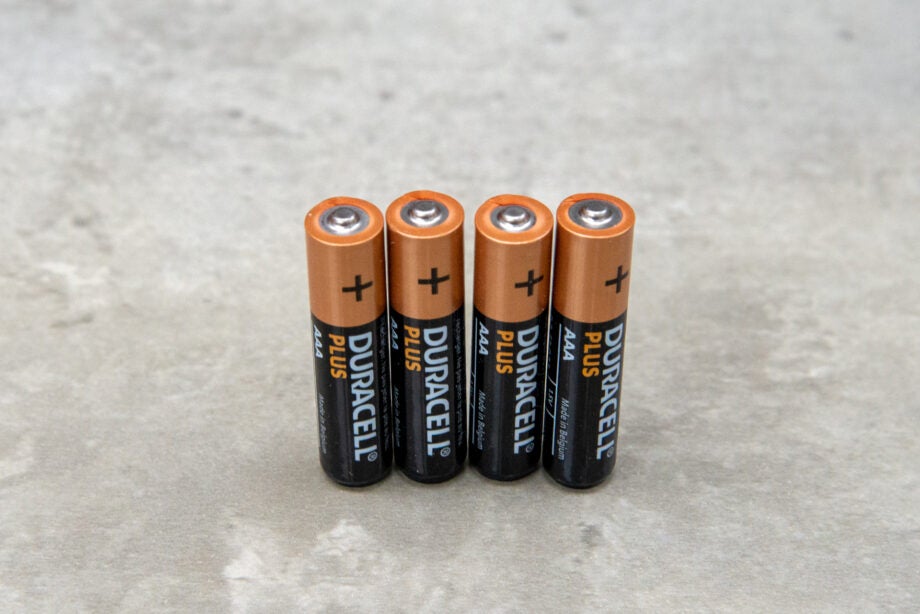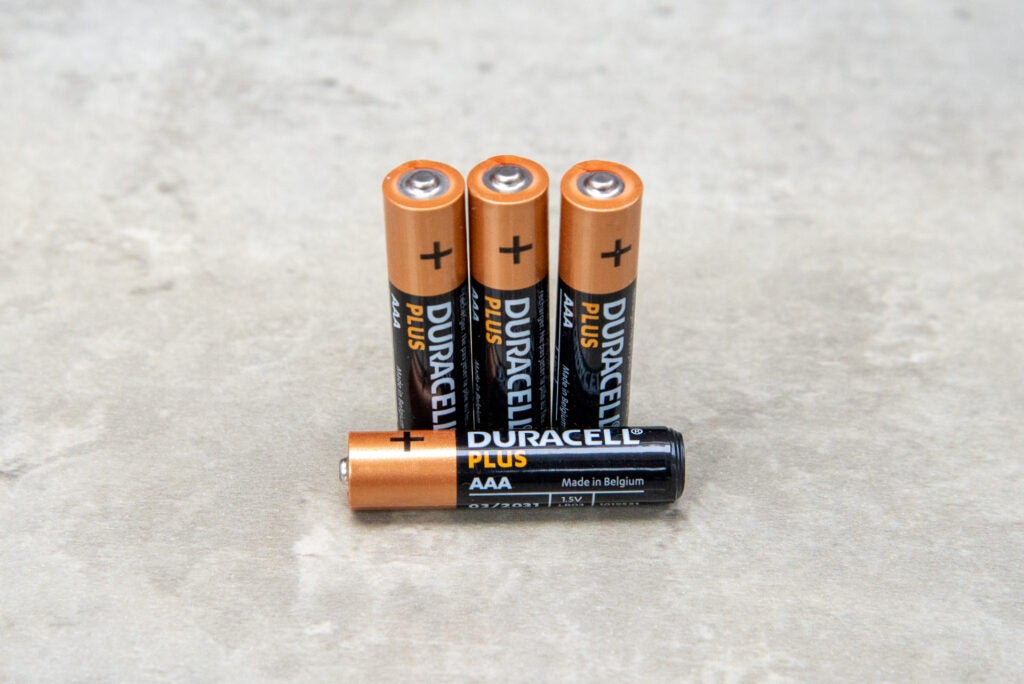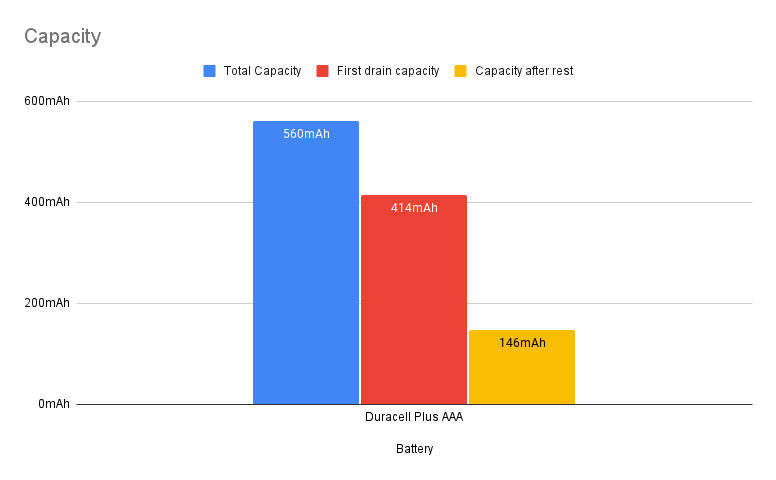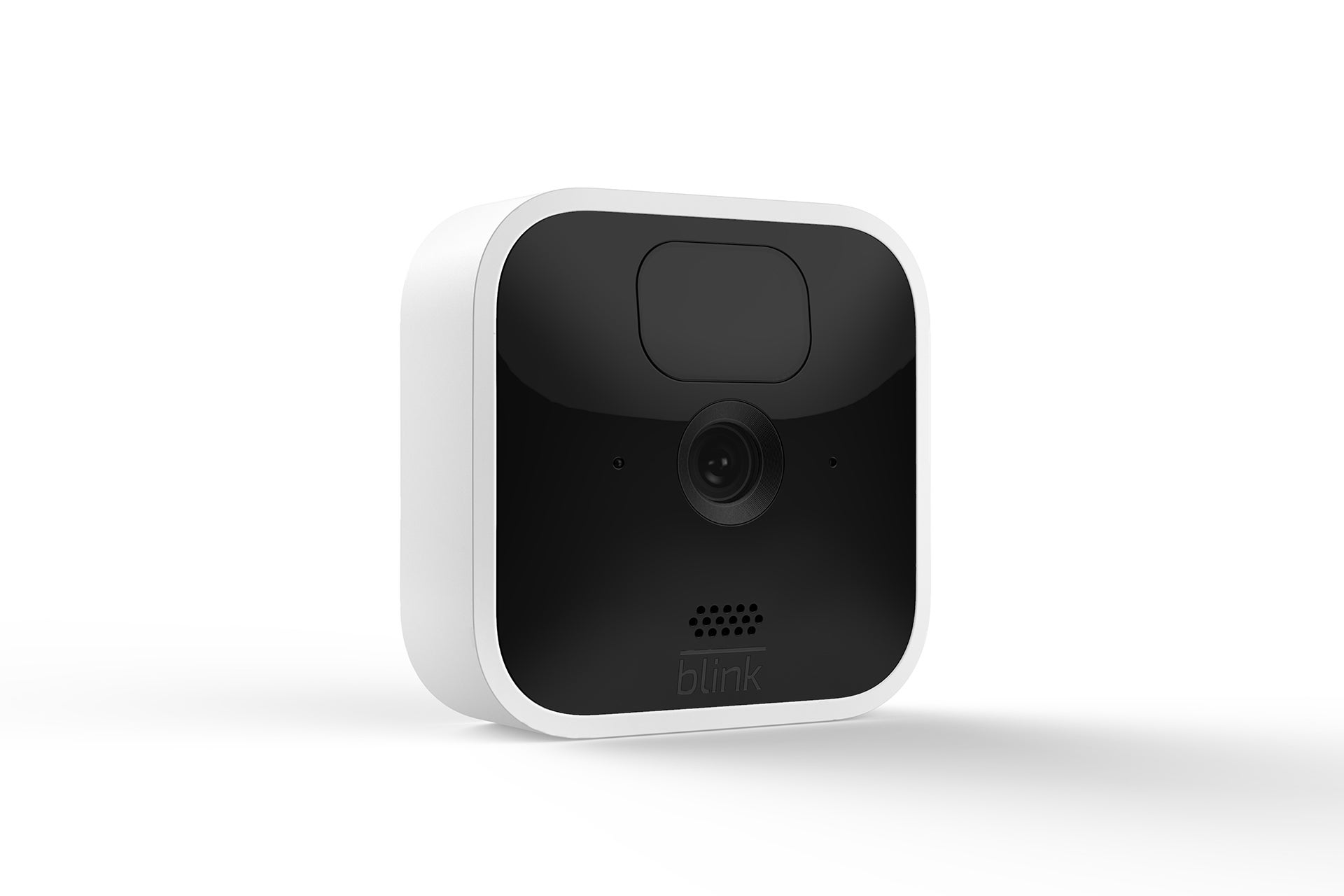Duracell Plus AAA Review
High capacity for low-drain use

Verdict
The most well-known name in batteries, the Duracell Plus AAA are a quality choice. My tests showed decent overall capacity, although these batteries didn’t perform as well in my high-drain tests, so I recommend these more for lighter use, such as remote controls. Even so, the high cost may put some off and there are better value options.
Pros
- Good overall capacity
- Widely available
- Good range of pack sizes
Cons
- Expensive
- Middling high-drain test results
Availability
- UKRRP: £5.45
Key Features
- Battery typeThese are alkaline (non-rechargeable) AAA batteries
Introduction
Picture a set of AAA batteries in your head, and the Duracell Plus AAA are probably the set that you’re thinking of. The default choice for anyone that wants long-lasting batteries, Duracell has built a good name for itself.
Overall tested capacity in my tests was good, although the batteries didn’t do as well as some of its competitors in the initial high-drain test. There’s also the high price to consider, with these batteries costing a lot more than much of the competition. That’s a little disappointing considering how well the Duracell Plus AA batteries did in my tests.

Performance
- High overall capacity
- Other batteries perform better in the high drain test
Duracell provides a detailed specification sheet for its AAA Plus batteries. As with all batteries, the total capacity of the batteries depends on temperature, load and the cut-off voltage (voltage drops as the batteries are drained). In short, batteries deliver more power under lighter loads; less under high drain conditions. Duracell’s own specs demonstrate this.
To test, I use an Ansmann Energy XC3000. Its drainage test uses a high load of 600mA (+/-20%) with a cut-off voltage of 0.94V. I started by measuring the initial voltage of the batteries, which I bought from Amazon, at 1.49V. That’s just behind the nominal 1.5V that you’d expect from alkaline batteries; however, as voltage drops quite rapidly with alkaline batteries, this minor variation doesn’t matter.
After the initial drain, I measured a capacity of 414mAh. That’s alright, but is a way behind the Amazon Basics Alkaline AAA batteries.
I give batteries a few hours to cool down, and then re-run the same test to measure any residual capacity. I measured the Duracell Plus AAA at 146mAh, giving me a total capacity of 560mAh.

That’s a decent overall capacity and these batteries should do well in low-drain applications, such as in remote controls
As with most alkaline batteries, Duracell says that these have a 10-year shelf life, so you can buy in bulk and not worry about them discharging while not in use.
Latest deals
Duracell Plus batteries are available in a wide range of unit sizes. For a set of four, expect to pay around 73p a battery. Bigger packs are generally better value (although not always), with prices per battery dropping to around 55p. I’ve listed the price for the pack of eight (around 68p per battery), as it’s a good compromise between pack size and price.
Should you buy it?
If you want big-brand batteries to go into low-drain devices such as remote controls, then these are a good choice.
My high-drain test shows that there are batteries that performed better here, plus you can buy much cheaper AAA batteries.
Final Thoughts
Decent overall capacity shows that the Duracell Plus AAA could be a good choice for lower-drain use. If you need higher-drain batteries for more intensive use, my high-drain tests showed that these batteries were a way behind the Amazon Basics Alkaline AAA batteries. These batteries are also expensive.
How we test
Unlike other sites, we test every alkaline battery we review thoroughly over an extended period of time. We use standard tests to compare features properly. We’ll always tell you what we find. We never, ever, accept money to review a product.
Find out more about how we test in our ethics policy.
We use an Ansmann Energy XC 3000 to drain batteries, so that we can test capacity in mAh. After the first run, we allow the batteries to cool and then retest to give us a second reading.
We measure the initial voltage of the batteries, checking that the starting voltage is at least 1.5V.





